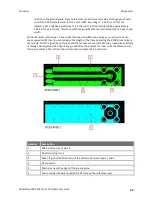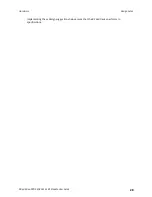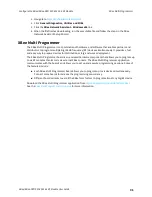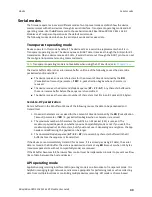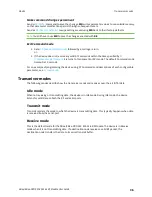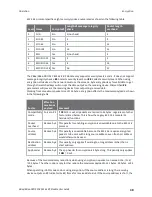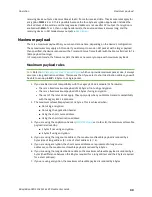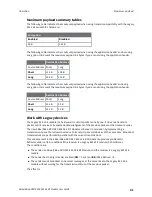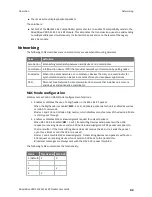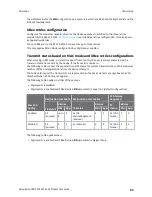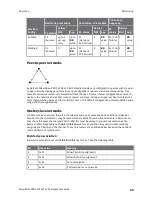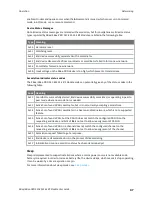
Modes
Serial modes
XBee/XBee-PRO S2C 802.15.4 RF Module User Guide
33
Serial modes
The firmware operates in several different modes. Two top-level modes establish how the device
communicates with other devices through its serial interface: Transparent operating mode and API
operating mode. Use the
AP
command to choose Serial mode. XBee/XBee-PRO S2C 802.15.4 RF
Modules use Transparent operation as the default serial mode.
The following modes describe how the serial port sends and receives data.
Transparent operating mode
Devices operate in this mode by default. The device acts as a serial line replacement when it is in
Transparent operating mode. The device queues all UART data it receives through the DIN pin for RF
transmission. When a device receives RF data, it sends the data out through the DOUT pin. You can set
the configuration parameters using Command mode.
Note
Transparent operating mode is not available when using the SPI interface; see
.
The device buffers data in the serial receive buffer until one of the following causes the data to be
packetized and transmitted:
n
The device receives no serial characters for the amount of time determined by the
RO
(Packetization Timeout) parameter. If
RO
= 0, packetization begins when a character is
received.
n
The device receives the Command Mode Sequence (
GT
+
CC
+
GT
). Any character buffered in
the serial receive buffer before the sequence is transmitted.
n
The device receives the maximum number of characters that fits in an RF packet (100 bytes).
Serial-to-RF packetization
Data is buffered in the DI buffer until one of the following causes the data to be packetized and
transmitted:
1. No serial characters are received for the amount of time determined by the
RO
(Packetization
Timeout) parameter. If
RO
= 0, packetization begins when a character is received.
2. The maximum number of characters that will fit in an RF packet (100) is received. The
maximum payload depends on whether you use Compatibility mode or not. If you use it, the
maximum payload is 100 characters, but if you do not use it, depending on encryption, the App
header and addressing, the payload can be larger.
3. The Command Mode Sequence (
GT
+
CC
+
GT
) is received. Any character buffered in the DI
buffer before the sequence is transmitted.
If the device cannot immediately transmit (for instance, if it is already receiving RF data), the serial
data is stored in the DI Buffer. The data is packetized and sent at any
RO
timeout or when 100 bytes
(maximum packet size without Compatibility mode) are received.
If the DI buffer becomes full, hardware flow control must be implemented in order to prevent overflow
(loss of data between the host and device).
API operating mode
Application programming interface (API) operating mode is an alternative to Transparent mode. It is
helpful in managing larger networks and is more appropriate for performing tasks such as collecting
data from multiple locations or controlling multiple devices remotely. API mode is a frame-based









